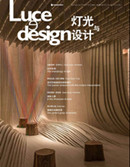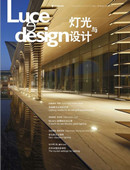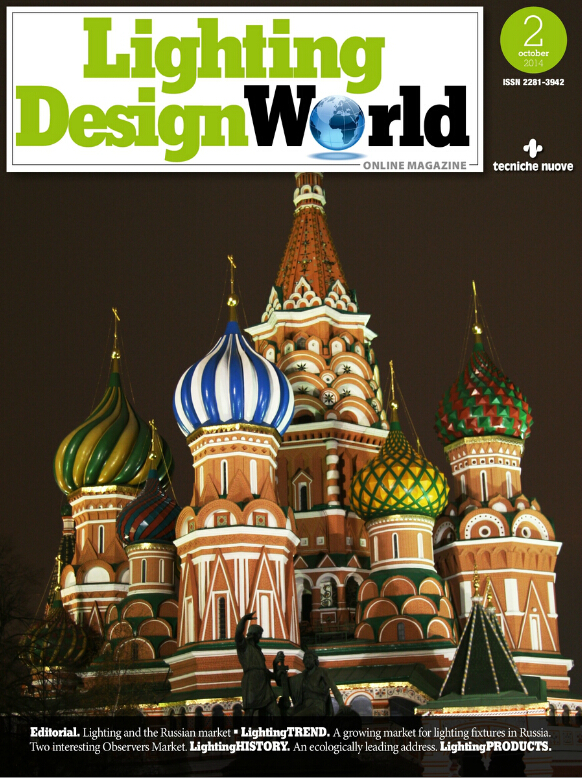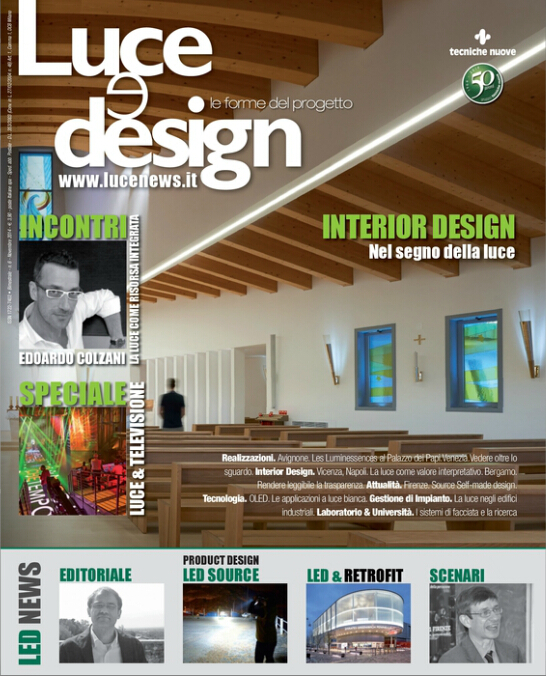在贝鲁特的老城区中心藏有一个宝贵的历史遗产——约30个按照历史原貌恢复的建筑群。著名照明设计师路易•克莱尔带领他的团队为该建筑群设计了创新独特的立面照明。我们有幸采访了他,了解到他是如何把握这种类型的项目
Located in the historical center of Beirut lays a hidden treasure, around 30 buildings which with restored and enhanced beauty. The famous lighting design, Louis Claire has led his team to design the innovative façade lighting for them. We had the chance to interview him and hear his know-how on this type of project
在饱受战争的摧残之后,贝鲁特市老城区中心恢复了旧时的原貌,矗立着带有传统风格的建筑。该项目的推动者,Solidere,邀请本地和各国各个领域的专家,共同出谋划策,以恢复和提升这个令人印象深刻的建筑遗产的独特的美。
该项目的第一阶段将将市中心特殊的遗产轨迹周围的30多个楼宇来串联起来,统一由Solidere 来出设计方案,使之成为市区内最引人注目的地方。
什么是从客户的要求都有哪些?您是与客户联系直接联系还是间接通过建筑师?
在要求是提升在贝鲁特中心镇的这些文物建筑,这些建筑在内战期间受损,外立面被恢复为一百年前的模样。我们从来不直接和客户联系,都是通过中间人。
这些建筑有着悠久的历史,设计考虑是怎样的?如何提高建筑物的历史感,同时防止光污染呢?
主要的设计考虑是尊重建筑外立面的原始设计,让人们看到了所有的飞檐和外立面的细节轮廓从而欣赏他们的美。白天的自然光不影响建筑物的外墙,但是,如果设计师在人行道上安装照明向上打光,照到天上去,这就成了光污染。我们的技术是唯一一种能够将光只传送到我们想要它去的地方的技术。因此,我们设计了立面照明的框架,使它只照到设计好的确切的地方。
立面照明您使用的传统技术都有哪些?
这很简单一般的立面照明技术手段有两种。
其一是将灯具安装固定在立面底部,然后向上打光。这样的话,灯具会在白天和晚上都比较明显,不是很美观。而且晚上的时候灯光不能将建筑的细节充分地表现出来。我将这种效果称之为“洗澡”。其二是将灯具固定在建筑立面之上,这种手法很常见。问题是白天人们可以看见灯具,像是一个十几岁年轻人的脸上青春痘一般明显。晚上的时候,在离目标区域比较近的地方会非常亮,旁边的阴影会非常暗。虽然这两种情况在20年前是普遍使用的,但是我认为这是很丑的。第二种方法可以使用大一点的方形或圆形灯具或“线性”系统。十年前我曾经用冷阴极管技术来勾勒飞檐,白天还是比较隐蔽的,在夜间也没有像“法国小胡子”的阴影。
你在这个项目中使用了什么样的技术以消除光污染?
现在在传统照明手法中运用的灯具更易于维护,但也更贵。这个项目我们可以使用线性 LED 系统,因为它有更好的防水保护,体积小也更小。缺点是,它必须要安装到建筑立面上,而建筑是古迹,不允许这样做。
我们的解决方案很简单。在需要打亮的建筑物对面的建筑顶部上的安装灯具。白天,你不会注意到它。到了夜里,它没有任何额外的灯具。我们使用“幻灯片”的概念,灯光设计和画面内容完全与建筑立面大小一致,没有任何多余的光落到设计好的框架之外,因此也就没有光污染。这种灯具是一种常用于戏剧和演艺界的舞台灯光,因为不能防水下雨外和粉尘等,所以没有在户外应用。这就是为什么我们与一家灯具厂商合作开发了特制的灯具,具有最佳影像光学质量的同时,还具备防雨或尘埃所需要的保护。这是这种方法第一次在外部环境中永久使用。这种新方法把建筑从电缆解脱出来,保持了原有的建筑完整性。
您主要使用了哪些光源?为什么?
我们用1200瓦的金属卤素灯,它的光源点小,距离反射器就可以很近,使其光效更好。
In the heart of the downtown Beirut, which was devastated by the war, beautiful buildings of all ages and styles have been brought back to their ancient splendour.
The promoter of the project, Solidere, involved Lebanese and international experts from every cultural field to restore and enhance the unique beauty of this impressive architectural legacy.
This project will involve in its first phase around 30 buildings located along a special heritage trail designed by Solidere to link the most remarkable places of downtown.
图1-5:古建筑外立面上的具有历史感的细节,例如飞檐
Picture 1-5: Façade on the historical building showing its intricate details such as cornices
What was the brief from the client? Did you contact the client directly or indirectly through architect?
The brief was to enhance the heritage buildings in centre town of Beirut, these buildings were damaged during the civil war and they reconstituted the facades as 100 years ago
We never contact directly customers
We get jobs mostly after tender , these tenders can be open to a world large competitors or after preselection
But we always have competitors in front of us with other projects and other costs
The buildings have a long history, what are the design considerations to enhance the historical characters the buildings while protecting them from light pollutions?
The main design considerations are to respect the original design of the facade and allow people to see the outlines of all cornices and details of facades and appreciate the beauty of them. Light pollution does not affect the facades but the buildings are made to be under the day light at exterior, artificial light can’t damage it. However, if designers install light fittings on the pavement to shoot up along the facade, the light will go up to the sky to the clouds. Then it becomes the light pollution. Our technique is the only technique able to send light just where we want and nowhere else. Hence we designed the frame for façade lighting and limited it exactly to where we want it to be.
What were the traditional techniques for façade you used before?
That’s simple. The normal techniques means 2 fitting positions for facade lighting.
The first is install poles with fittings fixed on it at the feet of the facade and shoot up
The fitting will be obvious during the day and night, the result is that the building will appear at night without details. That’s what I call like a “shower”. The second technique is to screw the fittings on the facades as you can see this method every where. But the problem with it is that during the day, you see the fittings like pimples on a teen ager face. During the night you get very bright effect close to the spot and very dark shadows just close to it. In both cases, I think that’s ugly even though 20 years ago it was ok.
The second technique can use either big square or round fittings or “linear ” systems. Ten years ago I used cold cathode technique along of the cornices , or very slim fluorescent systems , so it was very discreet during the day and without shadows like “French moustaches ” during the night.
图片6:投影设计中的一个图案投射到建筑物上
Picture 6: One of the design in the slide can be projected onto the building
What were the techniques you used for this project to eliminate light pollution?
Today, the fittings used in the traditional techniques are easier to maintain but more expensive, for this project we had the option of the linear LED systems with better water protection and smaller size. The downside is that we had to fix the fittings to the facade, and when it is heritage, it is not allowed to do so.
Our solution is simple. We put the fittings on the top of the facade of the building opposite the one to be illuminated. During the day you will not notice it at all. During the night, it is the illuminated facade without extra fittings on them. We used the “slide” concept, meaning designing exactly the line and the surfaces we want to be lit, so there is no loose light out of designed frame, hence no light pollution. These kind of fittings are commonly used in theatre and show business for stage lighting and can not be used outside because of rain and dust etc. This is the first time this method is used in a permanent outside environment. That’s why we developed a new fittings with the help from a fitting manufacturer. The fitting has the optical quality for the best image and the needed protections against rain or dust to be installed outside. This new method set the façade free from the cables and keep the original architectural integrity intact.
图片7:设置在建筑物对面的灯具的特写镜头
Picture 7: Close-up of the fitting on the opposite building
Which light sources did you use mainly? why?
In this case, we use 1200 W metal halide for its high rendering and little burning point. Little burning point allows better rendering of the optical system.
项目信息 Project Information
项目名称 Project Name: Facade lighting design for the Beirut hitorical central district
灯光设计 Lighting Design: LIGHT CIBLES www.light-cibles.com
灯具提供商 Lighting Suppliers: Lampo
图片提供:朗程照明
All photo courtesy: LIGHT CIBLES






































